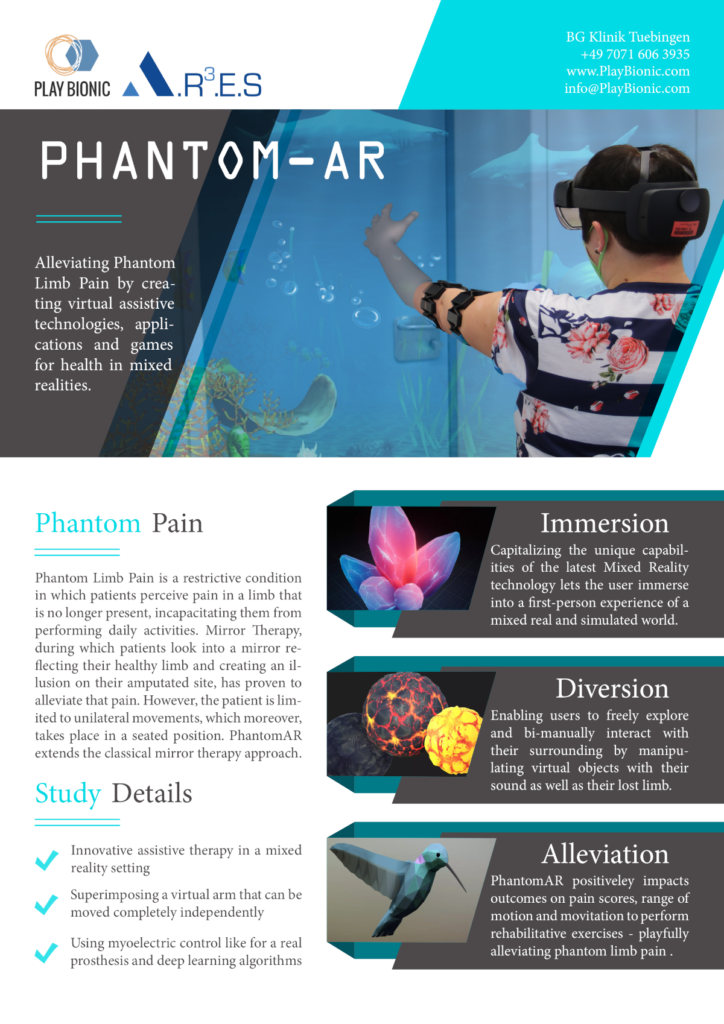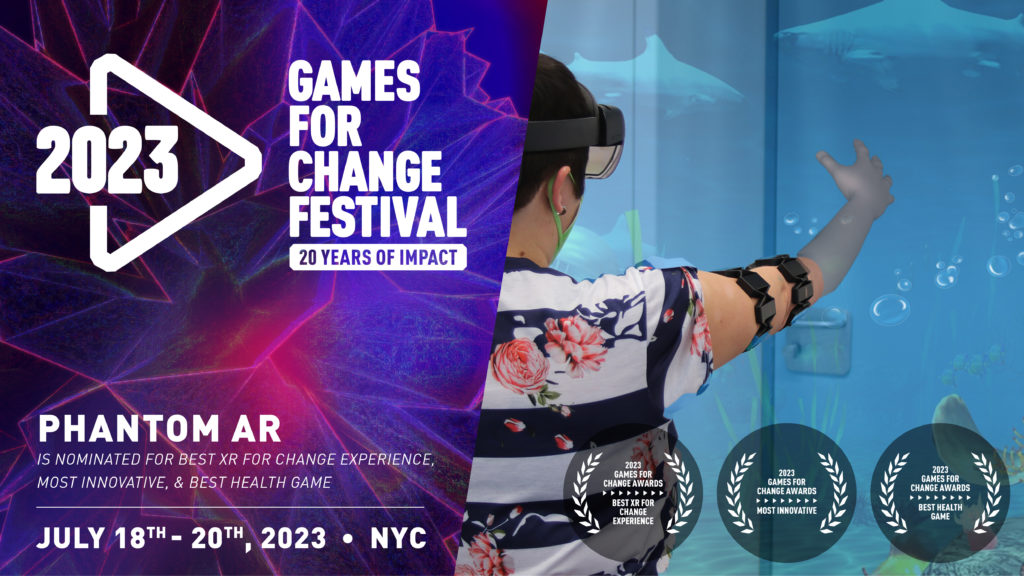Augmented Reality for Alleviating PLP
Phantom limb pain (PLP) is a restrictive condition during which patients perceive pain in their non-existent limb, incapacitating them on several levels. Mirror Therapy, during which patients look into a mirror reflecting their healthy limb on their amputated site, has proven to alleviate that pain. Modern methods to address PLP shift the focus on the use of commercial VR and AR systems.

VR was already an emerging field with commercial devices for home use such as Oculus Rift PLP is a restrictive condition during which patients perceive pain in their non-existent limb, which incapacitates them from performing daily activities. Mirror Therapy uses a mirror placed between the patients healthy and amputated hand. The reflection of the healthy hand creates the illusion of a healthy limb on the amputated side, which has proven to alleviate PLP. However, the patient is limited to only unilateral movement which moreover, takes place in a seated position.
We developed a novel, clinically effective rehabilitation tool counteracting shortcomings of conventional therapy and exploit the unique capabilities of the MicrosoftHololens2: to liberate patients from their restrictive position at the table, to enable them to freely explore their environment, to perform bi-manual tasks by augmenting their stump with a virtual arm which is completely independent of the movements of their sound limb, to interact with virtual objects, and to integrate their rehabilitation therapy into a playful and stimulating setting.

Addressing complex health-related and quality of life impacting issues such as PLP through novel technology requires interdisciplinary team work among therapists, engineers and researchers. To gain further insight on the impact of XR Mirror Therapy, we plan to conduct a four week intervention study using the application four days per week to compare the intensity, frequency and quality of PLP and embodiment.
It is imperative for us that we develop products that are actually put to use in helping patients. Currently, PhantomAR is exclusively for transradial (forearm) amputees, but in the future we plan extended it to transhumeral (upper arm) amputees as well.

Awards
PhantomAR has been nominated in 3 out of 8 categories at the Games for Change Awards in NY, USA.
- Most Innovative
- Best XR for Change Experience
- Best Health Game

Publications
- PhantomAR: gamified mixed reality system for alleviating phantom limb pain in upper limb amputees – design, implementation, and clinical usability evaluation
- Extending Mirror Therapy into Mixed Reality—Design and Implementation of the Application PhantomAR to Alleviate Phantom Limb Pain in Upper Limb Amputees
- Developing a wearable Augmented Reality for treating phantom limb pain using the Microsoft Hololens 2
Video trailer showcasing the PhantomAR application
Contributors
Project lead: Cosima Prahm
Collaboration: Hideaki. Kuzuoka (Department of Mechano-Informatics, University of Tokyo, Japan)
Software developers: Michael Bressler, Cosima Prahm, Korbinian Eckstein (School of Information Technology and Electrical Engineering, University of Queensland, Brisbane, Australia)
Student assistants: W. Zhixing, K. Ri, T. Suzuki (Department of Mechano-Informatics, University of Tokyo, Japan)
Clinical consultants: Jonas Kolbenschlag, Joachim Merk, Heide Schwieder, Tanja Gohlke
